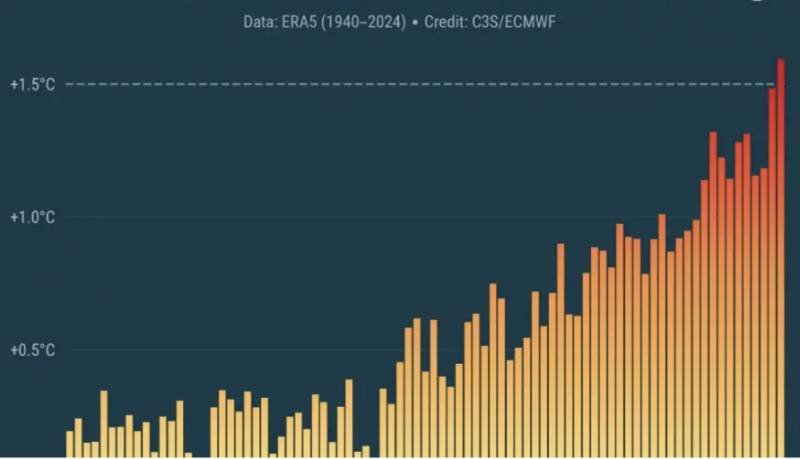Date Published: 08/11/2024
2024 will be the warmest year to date, marking a new milestone in the record books
This year will be the first year with an anomaly greater than 1.5ºC above pre-industrial levels
2024 will almost certainly be the warmest year on record and the first to exceed the 1.5°C barrier above pre-industrial level for the year.
These figures were reported by the Copernicus Climate Change Service (C3S), the climate monitoring component of the European space programme.
The results mark “a new milestone in global temperature records and should serve as a catalyst for increased ambition ahead of the upcoming Climate Change Conference, COP29,” said Samantha Burgess, Deputy Director of Copernicus.
Based on the ERA5 dataset, it is virtually certain that the annual temperature by 2024 will be more than 1.5°C above the pre-industrial level, and is likely to exceed 1.55°C.
The average temperature anomaly for the remainder of 2024 would have to drop to near zero for 2024 not to be the warmest year on record, the report claimed.
Overall, temperatures were higher than average across virtually the entire continent of Europe, the report said.
Outside Europe, the temperatures that were the most above average were recorded in northern Canada and were well above average in the central and western United States, northern Tibet, Japan and Australia.
This past October was the second warmest October on record globally, after 2023, with an ERA5 average surface air temperature of 0.80°C above the 1991-2020 average for the same month.
Last month, Copernicus also recorded above-average rainfall in the Iberian Peninsula, France, northern Italy, Norway, northern Sweden and the eastern Black Sea.
The very same heavy rainfall caused severe flash flooding in the Spanish province of Valencia, with more than 200 fatalities.
Furthermore, Ocean surface temperatures remained unusually high in many regions also.
Precipitation and soil moisture were below average across most of Eastern Europe, especially in western Russia, Greece and western Turkey.
Globally, wetter than average conditions were recorded in southern and eastern China, Taiwan, Florida, parts of western Australia and the southern tip of Brazil.
Copernicus observed drier than average conditions across much of the United States, the central lowlands of Australia, much of southern Africa and Madagascar, and parts of Argentina and Chile.
In October, meanwhile, Arctic sea ice extent reached its fourth-lowest value for an October month, 19% lower than average.
Antarctic sea ice extent was the second lowest for that month in the satellite data record, 8% below average, behind October 2023, continuing a series of large negative anomalies observed throughout 2023 and 2024.
For more information, news and what’s on in your area visit our homepage at
Spanish News Today
Images: Copernicus Climate Change Service
article_detail

|













